
- Share this page
Share this page
- EN
Select Language
- FAVORITES
- Search
Detailed search: You can do a detailed search by keyword, genre, time, area and tag.
Main content starts here.
- Visit Tokyo |
- SPOT |
- Central Tokyo |
- Tokyo Dome And Its Neighborhood: Baseball Games, Concerts, & More
Updated: June 17, 2025
Tokyo Dome And Its Neighborhood: Baseball Games, Concerts, & More
How big is Tokyo Dome and why is it so famous?
Tokyo Dome is a massive indoor stadium that's home to one of Tokyo's most popular professional baseball teams; the Yomiuri Giants. Opened in 1988, Tokyo Dome features a distinctive round, white roof that earned it the nickname "the Big Egg. Tokyo Dome has a maximum capacity of 55,000 for non-baseball events, and approximately 43,500 during baseball games. Covering 46,755 square meters, it's so large that people in Japan use it as a unit of size: a new shopping complex might be described as "several times the size of Tokyo Dome."
Besides baseball games, the stadium also hosts concerts and other performances. J-pop and K-pop groups, including aespa and NewJeans, have performed there, as have world-famous artists such as Bruno Mars, Mariah Carey, Van Halen, and even Taylor Swift during her record-breaking Eras Tour.
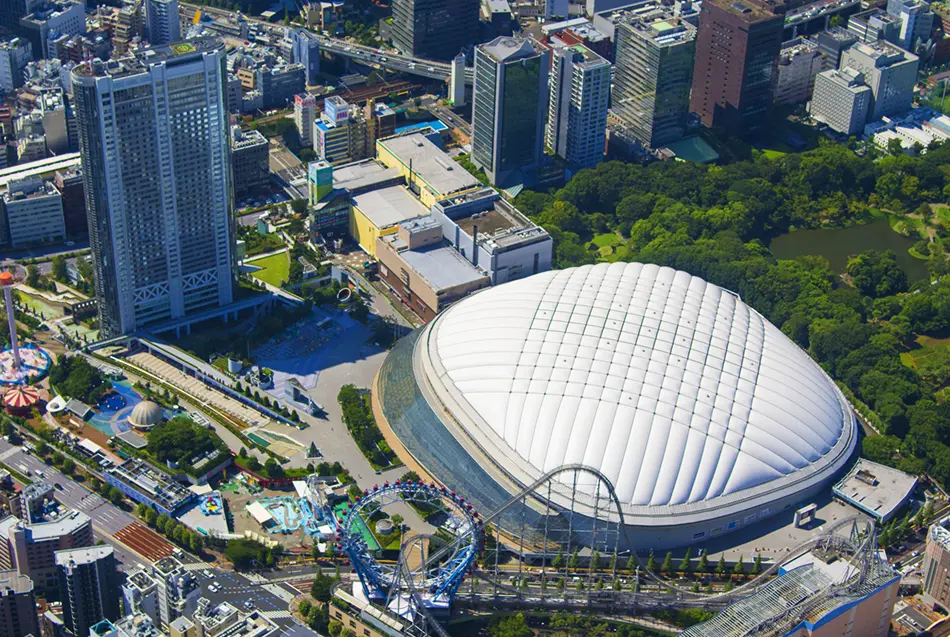
How to get to Tokyo Dome
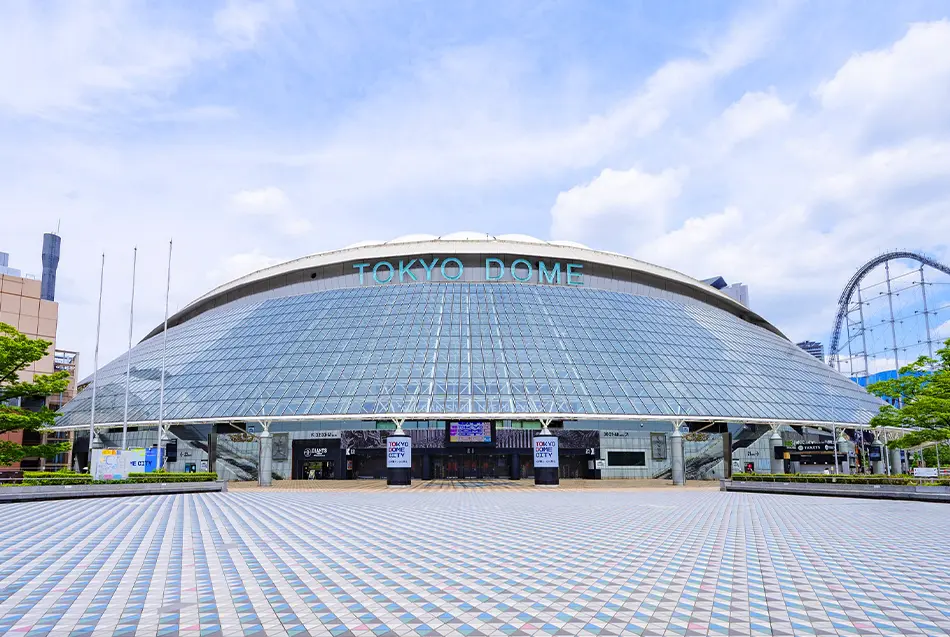
Address
The nearest station to Tokyo Dome is Suidobashi Station, which serves the JR Sobu Line and the Mita Line. If you take the Marunouchi Line or Namboku Line, you can get off at Korakuen Station. If you take the Oedo Line, Kasuga and Iidabashi Stations are both within walking distance.
While Tokyo Dome is closer to Haneda Airport than Narita Airport, it can be easily reached from either airport by public transport.
Access from airports and popular areas
From Haneda Airport: Around 75 minutes on the limousine bus, or 70 minutes by train.
From Narita Airport: Around two hours and 20 minutes by limousine bus, or 90 minutes by train.
From Tokyo: Take the Tokyo Metro Marunouchi Line to Korakuen Station. Travel time: 10 minutes.
From Shinjuku: Take the JR Sobu Line to Suidobashi Station. Travel time: 15 minutes.
From Asakusa Station: Take the Asakusa Line to Asakusabashi Station, then change trains and take the JR Sobu Line to Suidobashi Station. Travel time: 17 minutes.
From Ginza Station: Take the Marunouchi Line to Korakuen Station. Travel time: 17 minutes.
Tickets and insider tips for a great experience at Tokyo Dome
Information about tickets and event times is available on Tokyo Dome's official website. For events within the stadium, noise curfew rules generally mean that concerts begin earlier in the evening and end similarly early.
Tokyo Dome offers Wi-Fi service that's geared toward foreign visitors. The temperature inside the dome is cooled to about 28℃ in the summer, and heated to 18℃ in the winter. The temperature and network environment are well maintained to ensure a comfortable experience.
It's worth visiting Tokyo Dome for the exciting atmosphere within the stadium itself, as well as the wealth of attractions surrounding it. We recommend allowing two to three hours to explore the area around the stadium. There are stores, amusement park rides, galleries, and more.
Inside the dome, you'll find the Baseball Hall of Fame and Museum, which has fascinating exhibits chronicling the history of baseball in Japan. The museum is open until 17:00. Make sure to arrive early to shop for merchandise and visit the hall of fame.
Secure tickets for baseball games or events of interest
You can find information about special events, such as upcoming concerts, boxing matches, Wrestle Kingdom events, and more on the event calendar on Tokyo Dome's official website, including information about how to purchase tickets. Baseball tickets are available online or at the ticket counter.
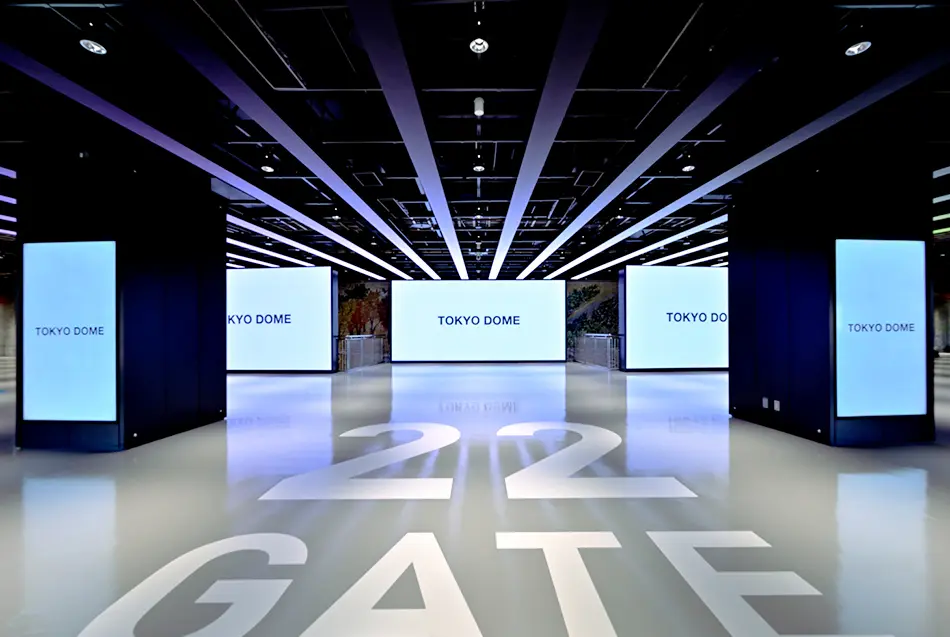
Check the seating chart & map before you go
Tokyo Dome has four floors of seating in the infield, and one floor in the outfield for baseball games. Check the seating chart and the locations of the nearest gates before you go, so you know where to enter the stadium.
You can download seating charts and stadium maps from the official website.
Food inside Tokyo Dome
There is food for sale throughout Tokyo Dome, but the stadium is cashless, so bring a card or other electronic form of payment for on-site purchases. You can also bring in food and drinks, as long as the drinks are not alcoholic or in cans, glass bottles, or plastic bottles that are over one liter or frozen.
Bag policy and rules
You can bring bags into Tokyo Dome as long as they are not larger than the size of a seat. If your bag is too big, you can stow it in a coin locker, which requires the use of an IC card for payment. However, it's probably best to leave particularly large luggage at your accommodations. Although seats vary in size according to their location in the dome, they're not particularly large, so it's best to bring smaller bags. Make sure to check any official guidelines, as there may be additional restrictions during concerts and other events.
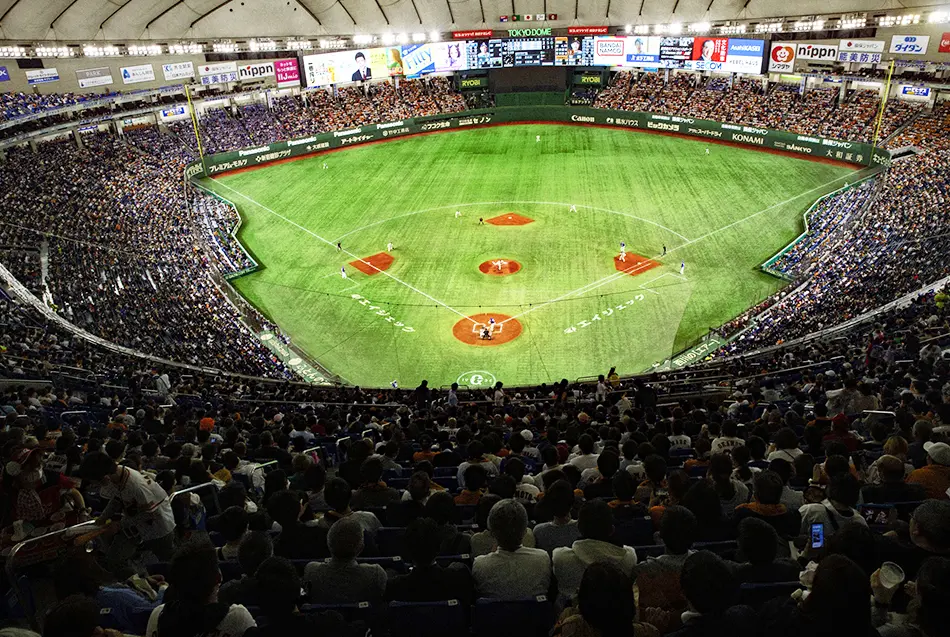
Beyond games: Tokyo Dome tour and museum
If you want to see Tokyo Dome without attending an event, you can sign up for an hour-long tour. The tour stops by the Giants store and athletic field, as well as the hall of fame. You can also learn all about how air pressure supports the domed roof.
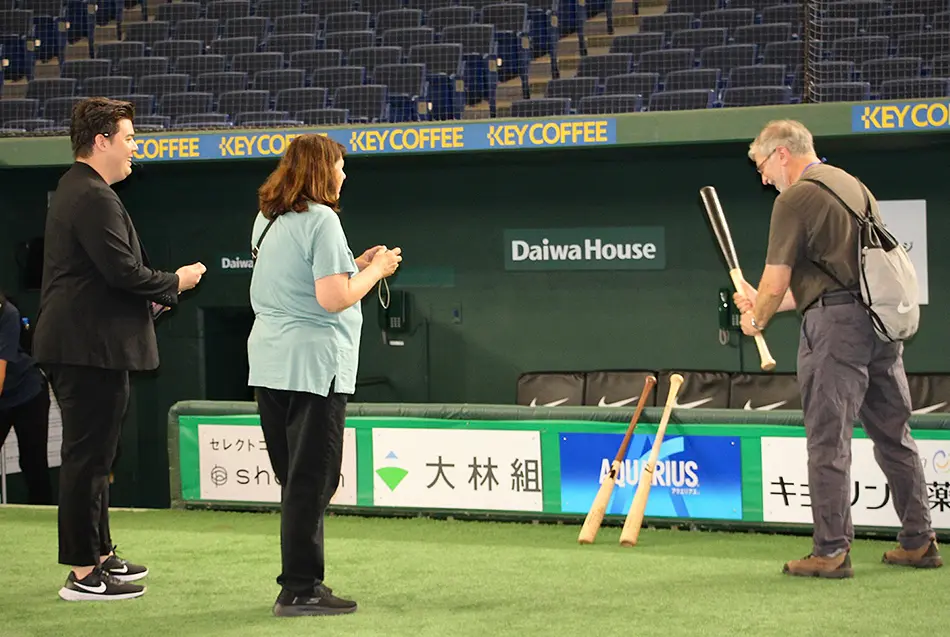
Discover Tokyo Dome City
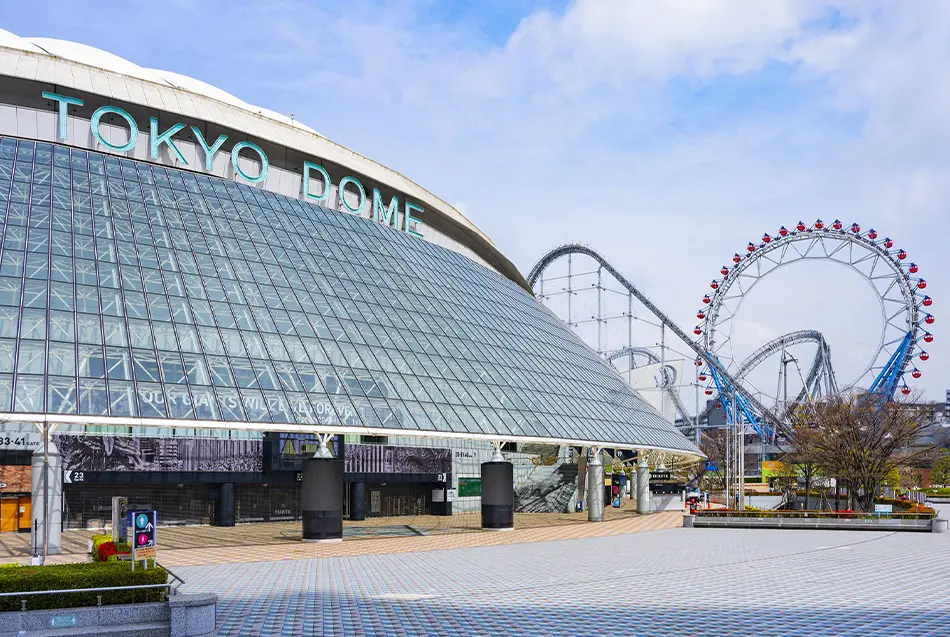
Tokyo Dome is located inside Tokyo Dome City, an area full of amusement park rides, stores, spas, sports facilities, and more. It's the perfect place to visit for a day trip, even if you're not visiting the stadium itself for an event. Tokyo Dome City is free to enter, but some facilities charge admission fees. Hours differ depending on the facility, but most are open into the evening. You can purchase tickets to the facilities at check-in counters on-site.
The operating hours of the amusement park “Tokyo Dome City Attractions” change depending on the season, so please check the official website. You can buy tickets for individual rides or an unlimited one-day pass. The unlimited pass is 4,500 yen for adults on weekdays and 4,800 yen on weekends, holidays, and other special days. The pass is 3,900 yen for teens (12-17 years old) on weekdays and 4,200 yen on weekends, holidays, and other special days. There are about 20 attractions in total, with individual admission fees ranging from 500 to 1,500 yen.
Roller coaster at the theme park Attractions
One of the most popular attractions at Tokyo Dome City Attractions is Thunder Dolphin, Tokyo's fastest roller coaster. A ticket costs 1,500 yen. Experience the pulse-pounding thrill as you race through a course over 1,000 meters long in a minute and half. With a drop of 66.5 meters and a top speed of 130 km/h, you'll be on the edge of your seat.
Don't miss the world's first centerless “Big O Ferris wheel,” which the Thunder Dolphin races through, along with the Haunted House. From this giant Ferris wheel, you can enjoy panoramic views of Tokyo Dome City, and you can even enjoy singing karaoke inside your own gondola.
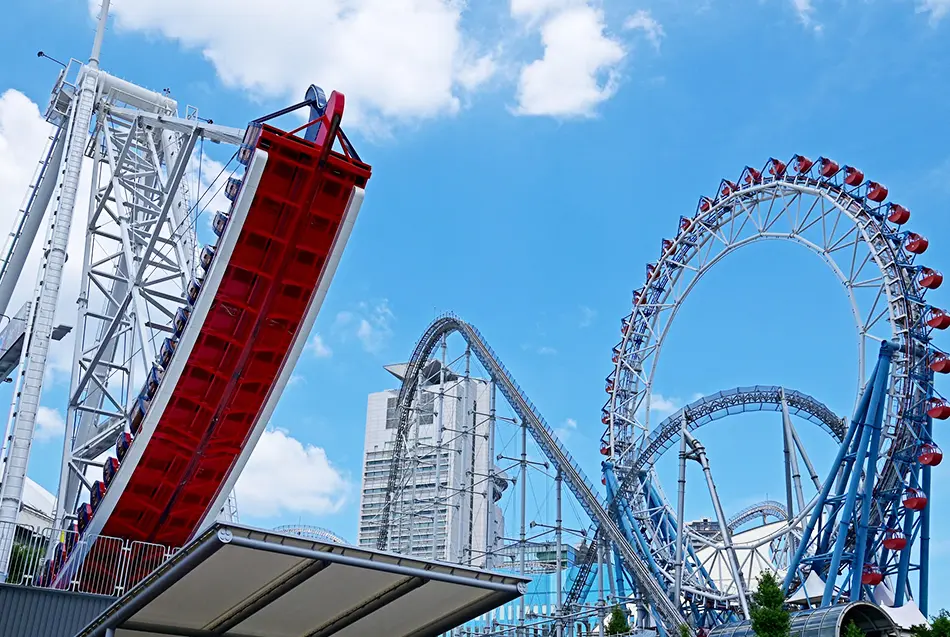
Natural onsen at Spa LaQua
For a more relaxing experience, visit Tokyo Dome Natural Hot Springs Spa LaQua, a popular complex of indoor and outdoor baths and saunas. The spa areas are separate for men and women, and information about Japanese bathing etiquette is displayed on signs in multiple languages.
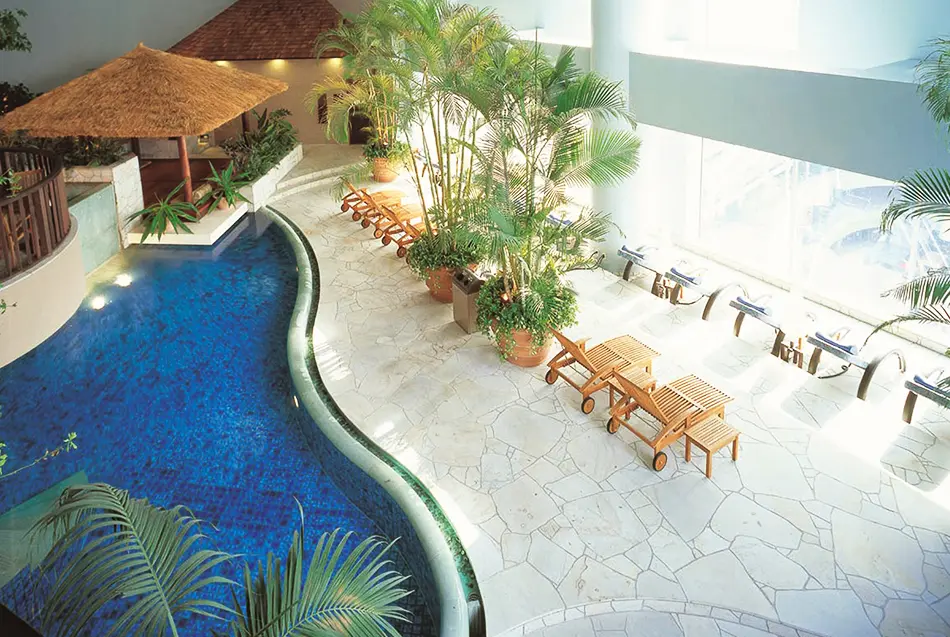
Top restaurants and stores in Tokyo Dome City
Tokyo Dome City's food options include ramen restaurants, international chains such as Shake Shack, and a large foodhall, called Food Stadium Tokyo. There are also stores selling food dotted throughout the area. Check out GiGO for exciting arcade games and anime merchandise.
Where to stay: Tokyo Dome Hotel
Tokyo Dome Hotel is a good, centrally-located place to stay during a visit to Tokyo. Its address is 1-3-61 Koraku, Bunkyo City, Tokyo. The hotel also features two exclusive rooms created in collaboration with Sanrio, themed around some of their popular characters. For breakfast, you can visit one of the hotel's restaurants or order room service.
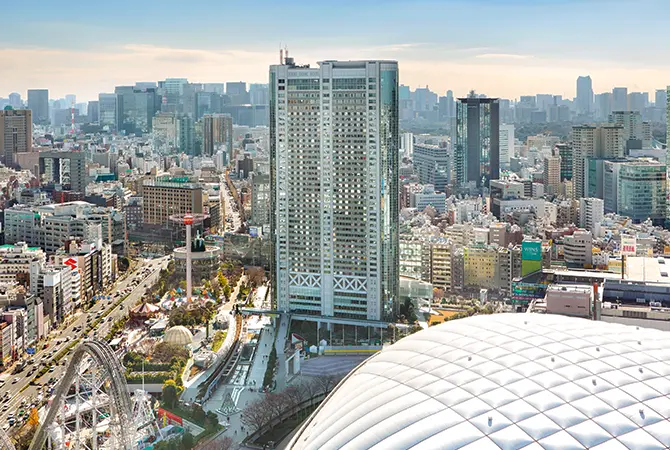
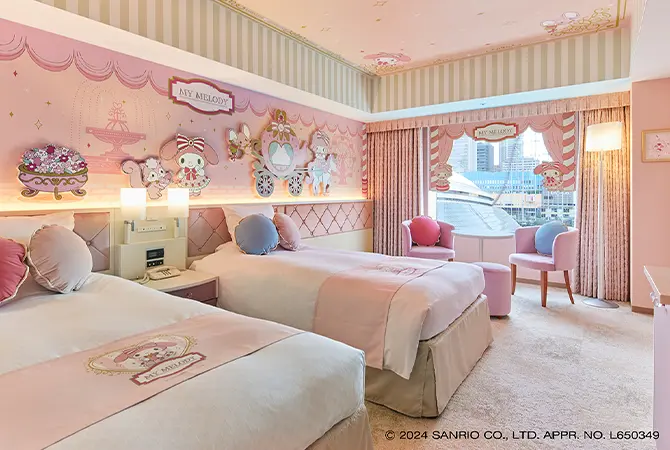
Explore activities near Tokyo Dome City
There are many interesting places to visit near Tokyo Dome City.
In addition to numerous historic shrines, temples, and other architectural landmarks, the area preserves rich green spaces like Koishikawa Korakuen Gardens where you can enjoy the beauty of traditional Japanese garden. The area is also known as an educational district with many academic institutions and cultural facilities such as the University of Tokyo, and you can visit places associated with literary giants like Mori Ogai and Natsume Soseki.
Koishikawa Korakuen Gardens
Koishikawa Korakuen Gardens, located next to Tokyo Dome, is a traditional Japanese landscape garden built in the Edo period (1603–1867). It's designed to resemble natural landforms and scenery, such as mountains and the sea. Take in the garden's scenery while strolling around, and enjoying the beauty of the changing seasons.
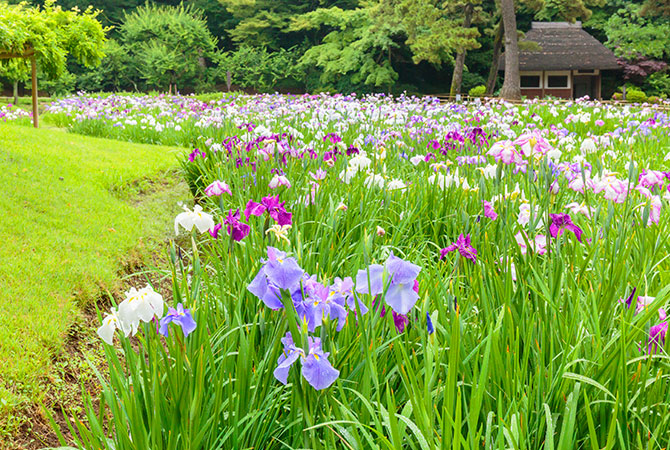
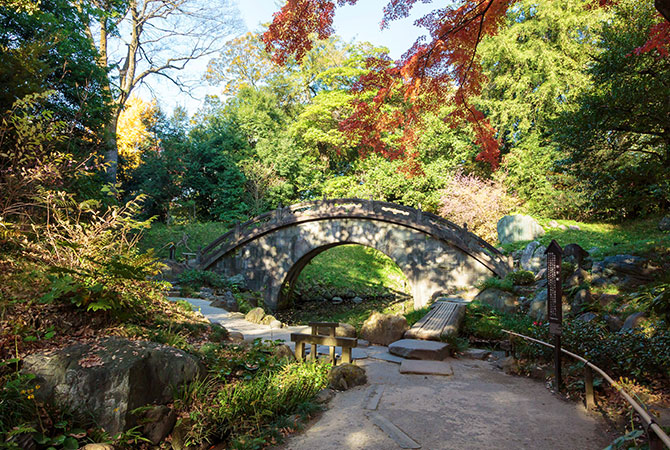
The University of Tokyo
The Hongo Campus of the University of Tokyo is home to historic buildings such as the Auditorium and the Akamon (Red Gate), with many spots open for the general public to explore. This area, bustling with students from several universities, features numerous reasonably priced restaurants, bars, and bookstores.
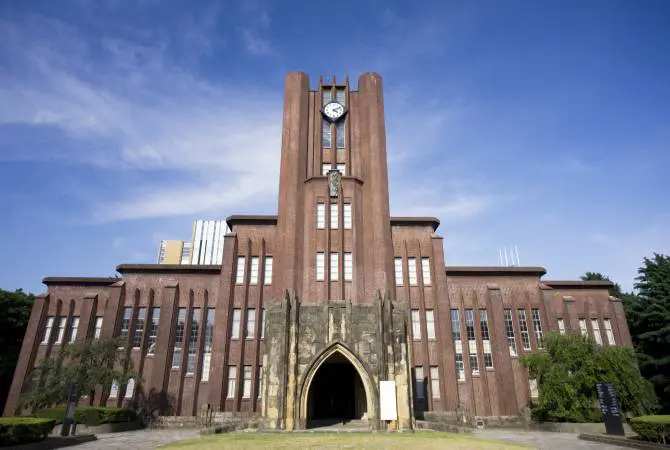 Hongo Campus, the University of Tokyo
Hongo Campus, the University of Tokyo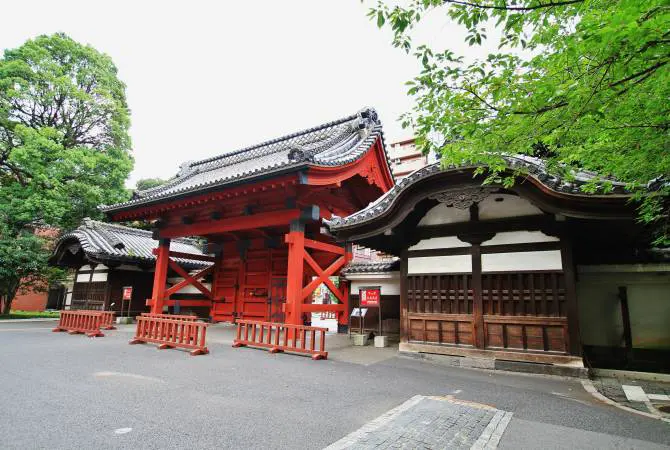 Akamon (Red Gate), the University of Tokyo
Akamon (Red Gate), the University of TokyoKodokan Judo Institute
The nearby Kodokan Judo Institute draws judoka from around the world to study and practice, and you can watch practice sessions and matches.
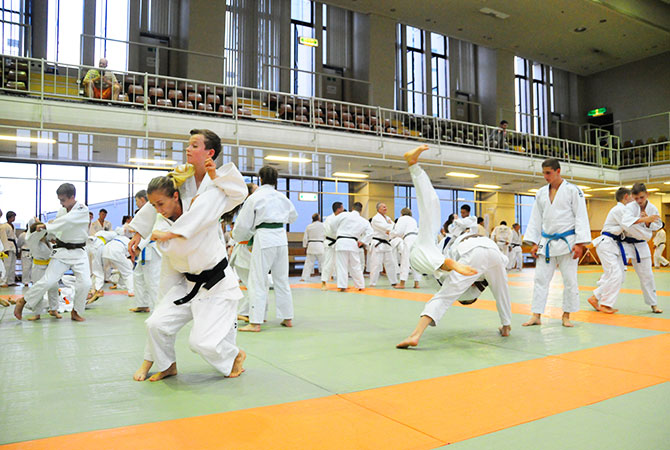
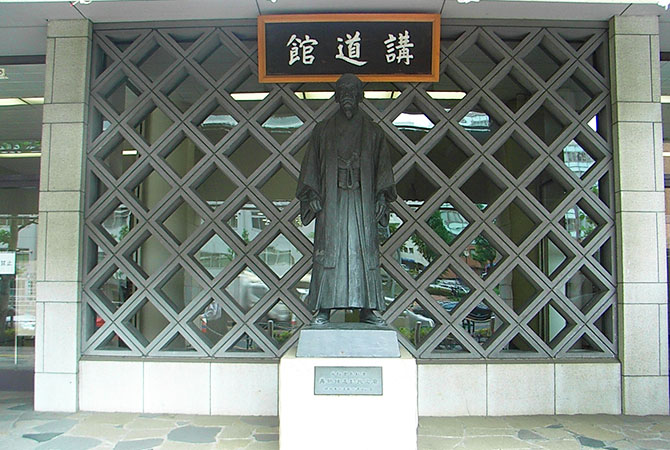
Illumination at night
If you're visiting in winter, don't miss Tokyo Dome City's winter illuminations. The entire area shines with LED lights decorated with a different theme each year, creating an exciting atmosphere.
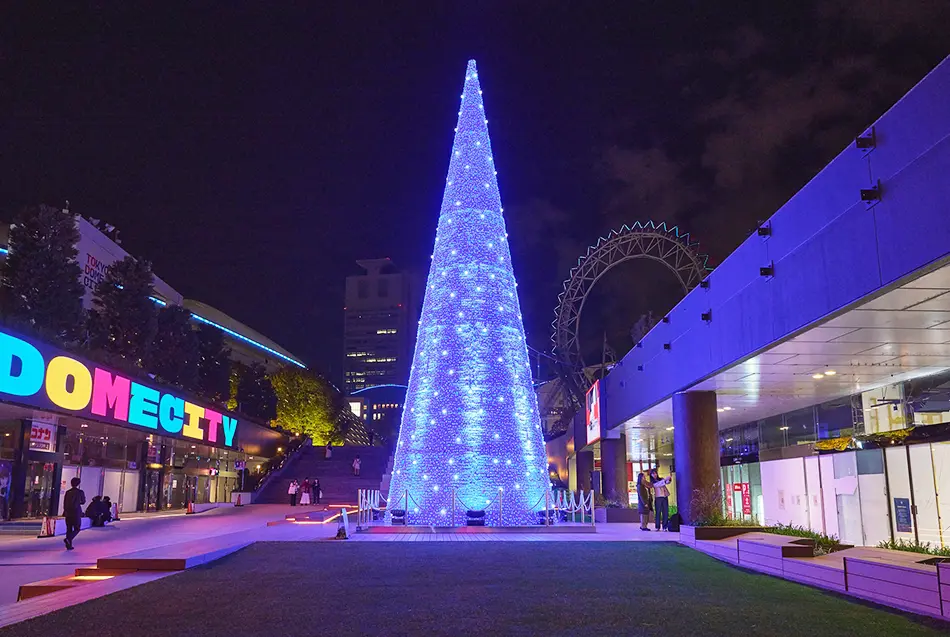
2024: Tokyo Snow Dome City
